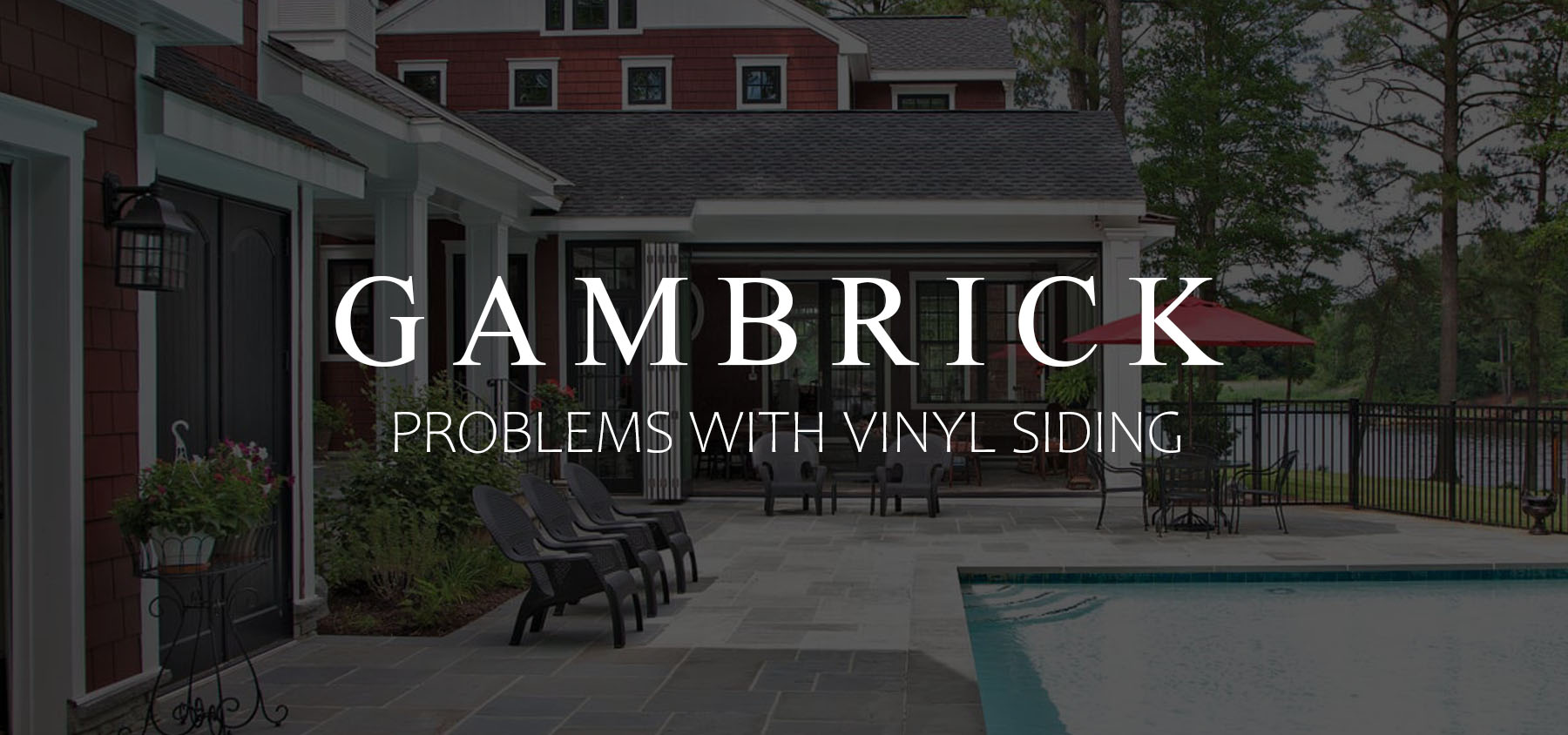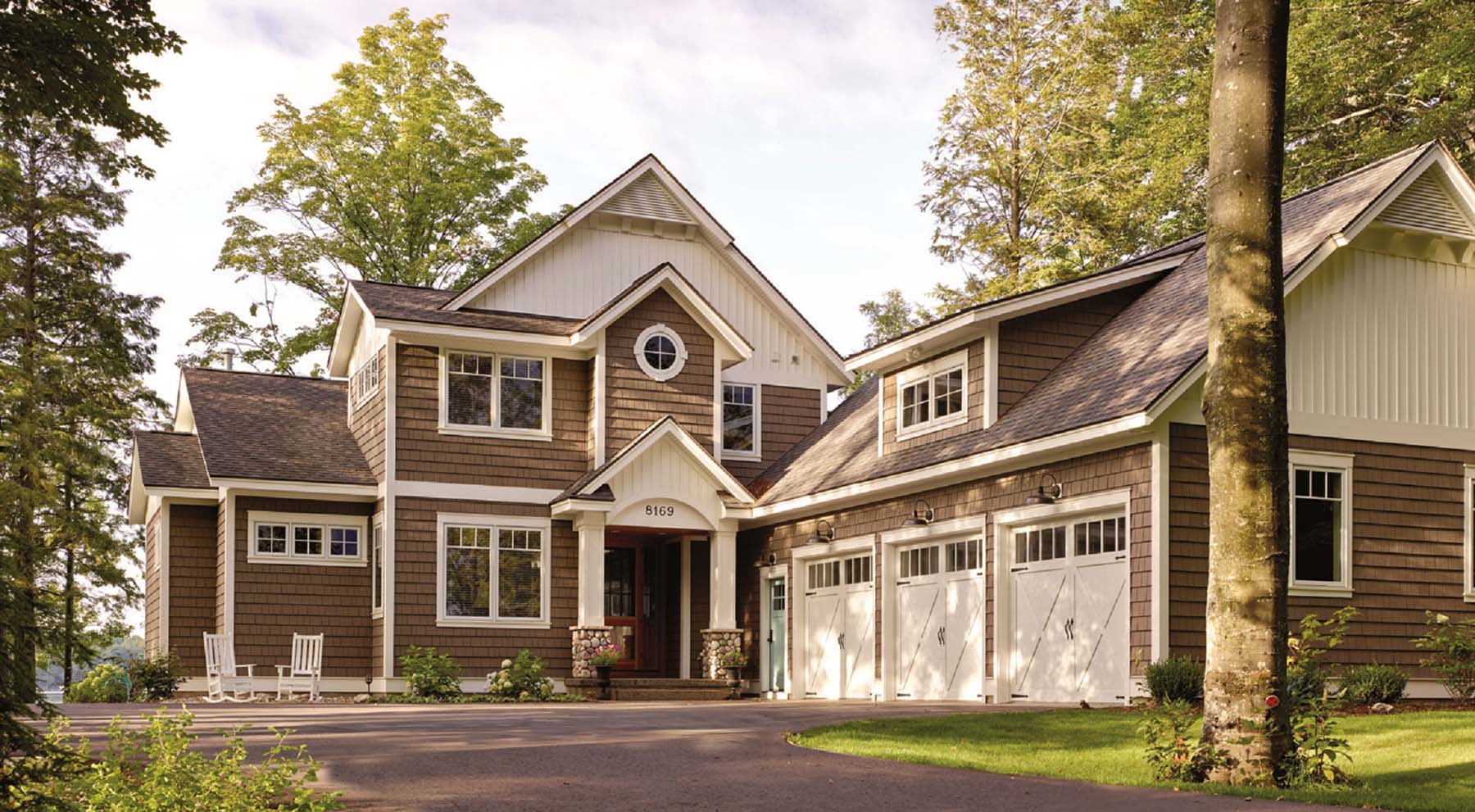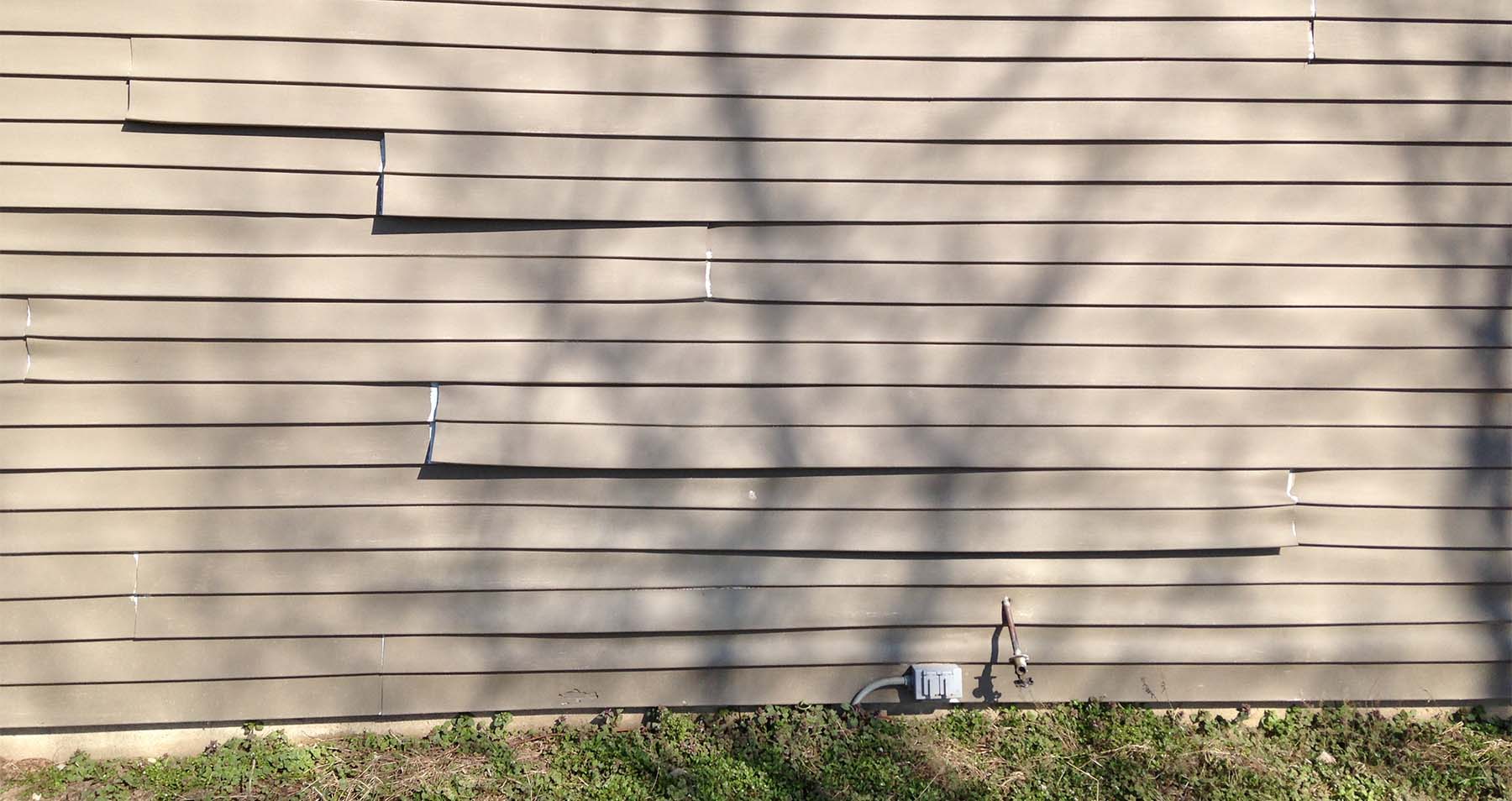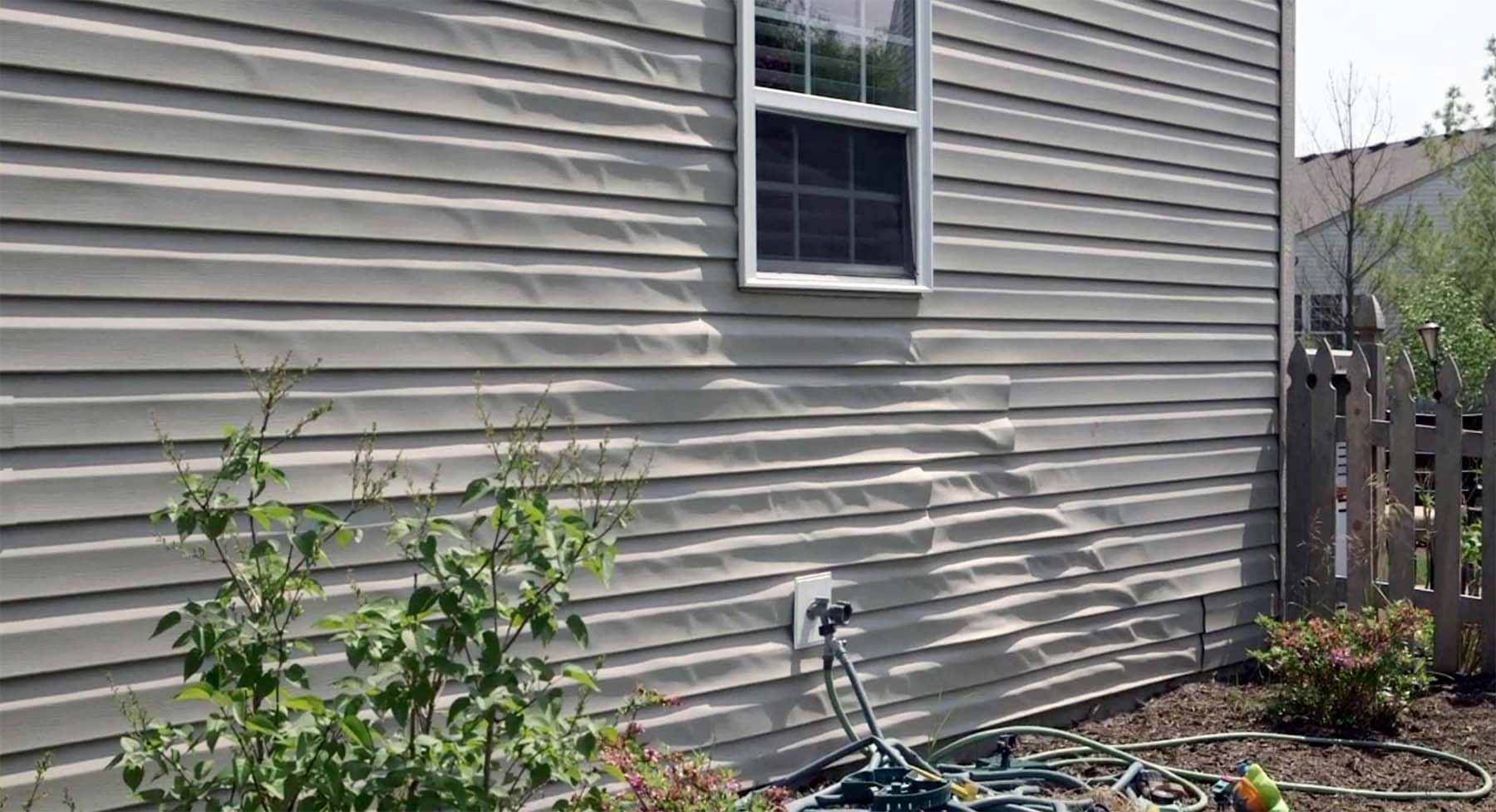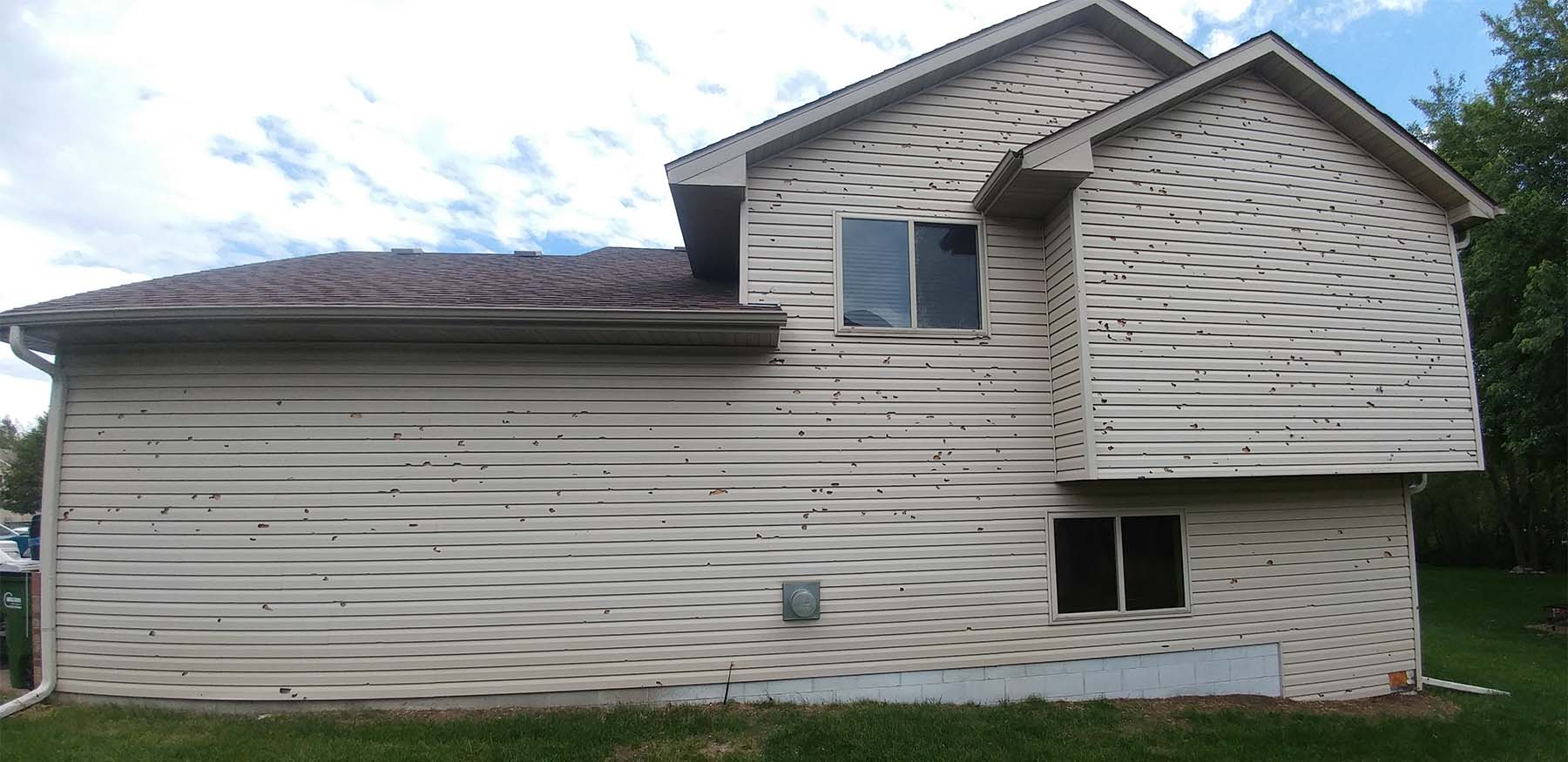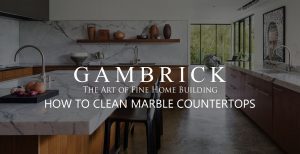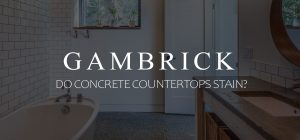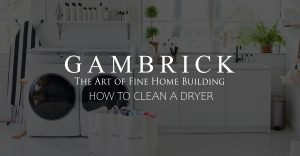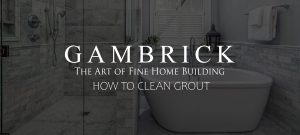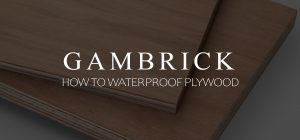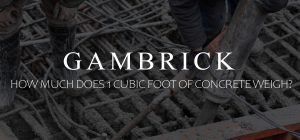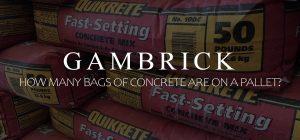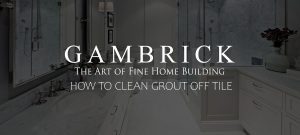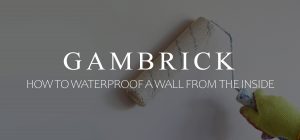Problems With Vinyl Siding
Siding does a lot more for your home than just look good. The main job of siding is making the house water tight which protects you from the elements. No one wants to live in a damp, drafty home and siding helps prevent that. It’s a fantastic product that’s affordable, easy to install, looks great and does it’s job protecting your home. But for all the great things about it, there are still a lot of problems with vinyl siding that we’ll go over below.
Vinyl siding has had a bad reputation in the past due to poor quality. But like with most products it’s improved a lot over the years. Today’s vinyl siding products are fade resistant, insect proof, look great, come in a wide range of styles and colors and are extremely durable.
If your looking for a truly low maintenance siding material to use on your home then you should at least consider using vinyl. For many homeowners, maintenance just isn’t something they want to do. Vinyl siding is a great looking, low maintenance alternative to wood or fiber cement. It doesn’t peel, chip or require painting every few years. But unfortunately, there are a few major problems with vinyl siding that you should be made aware of before siding your home.
This article should help you understand the drawbacks of vinyl siding so you can make the right decision for your home.
Common Disadvantages Of Vinyl Siding | Appearance
Vinyl siding has improved a lot from when it was first introduced a few decades ago. It’s offered in a wide range of sizes, styles and colors which in some cases even mimic the look and feel of real wood. However, the fact still remains, no matter how good the product is, at the end of the day it’s still just plastic. For all it’s improvements vinyl still doesn’t have the same look and feel of real wood or even fiber cement. Even from a distance vinyl siding just doesn’t look as good. It’s a trade off you’ll have to consider. While vinyl siding may be cheaper and maintenance free, it doesn’t look as good as natural products.
Because vinyl siding is long strips of molded plastic that gets nailed to the house on strip at a time, if it’s not properly installed you can see the areas where pieces overlap the next board. In other words you can some times see the seams or joints where 2 siding pieces meet. Even if you install the siding perfectly it can sometimes happen because vinyl expands and contracts from hot and cold weather. Most good siding contractors will put the joints facing the back of the house so you don’t see them from the curb but they still look pretty bad and there isn’t a way to completely hide or avoid seeing the joints.
Vinyl Siding Looks Fake
Vinyl siding generally has a fake, plastic appearance which is a given since that’s what it’s made of. When it’s brand new it looks good but once it starts to fade vinyl can look terrible and there isn’t a thing you can do about it. Real wood siding looks so great because it’s not all one color which gives it a natural appearance. Painted fiber cement gets repainted periodically so even though it can start to fade you just repaint and it looks brand new again.
Maintenance can be a pain but it’s what keeps you siding looking like new.
Warped And Buckled Vinyl Siding
Common Issues With Vinyl Siding
Vinyl siding is a great product that’s becoming more and more popular as time goes on. And it’s constantly being improved so he stuff your buying today is much better than what was used on homes 10 years ago. But there are still a lot of common problems with vinyl siding worth considering before you make a large investment. Below we’ll go over some of the more common ones.
Warping and Buckling
Buckling or warping can happen when siding isn’t installed the right away. Vinyl siding expands in high heat and contracts when it’s cold outside. There are slots on the back of each siding piece where you nail it to the wall. The slots allow for some movement side to side. When installing siding you drive one nail in the center of each slot. If installed the right way your siding will move from side to side about 1/2 inch after you nail it. If your vinyl siding doesn’t move then you’ve nailed it either too tight or in the wrong place.
This small amount of wiggle room is what allows for some expansion and contraction. If the siding is nailed too tight or can’t freely move side to side then it’ll buckle or warp.
This is one of the main reasons why vinyl siding isn’t used as much in really hot or cold climates. In really hot states like Nevada they use more stucco and masonry products like fiber cement because it doesn’t expand or contract. While you can replace areas that have buckled or warped, the same issue will happen again and again. Temperatures can even get high enough to melt vinyl siding so if you live in a really hot climate then consider using a different siding product.
Not All Vinyl Siding Is Created Equal
Some vinyl siding warps more than others. This is strictly a quality issue. The more expensive, high quality vinyl siding is thicker and in some cases even solid PVC or backed with insulation. These products don’t warp or buckle as much or even at all because they’re much stronger than the cheaper thin stuff. Manufacturers will let you know if the product is safe at extremely high or low temperatures if you ask them so do some research or ask your builder.
The cheap stuff is horrible in a changing climate so stay away from it. Cheap siding is so thin that even small temperature changes can make it warp. Here in NJ we get hot summers and cold winters but it’s not too extreme. Good vinyl siding like cedar shake impressions by Certainteed never gets damaged but we see cheap siding buckle all the time.
Buy a quality product and get it installed by a professional so warping and buckling won’t be a problem.
Moisture Problems With Vinyl Siding
Vinyl siding is designed to be flexible which allows for some expansion and contraction. Because of this it isn’t sealed tight to keep out water. A waterproof barrier is installed over the sheathing and under the siding which keeps out moisture. On older homes this layer was commonly made out of tar paper. Today we use products like Tyvek or Blueskin house wrap. If moisture somehow gets behind the siding and through the waterproof barrier your home can suffer serious water damage. Wood that gets wet can eventually develop rot, mildew, mold, and/or leaks.
Vinyl siding itself is water resistant just like any plastic product. And when it’s installed properly with a good waterproof membrane will act as a rain screen. If vinyl siding is functioning as designed most surface rain water will run right off it. Moisture that makes it’s way into small gaps and cracks should drain out through channels and weep holes built into the siding. Unfortunately, many people install siding improperly which can trap moisture behind the siding where it has no place to go. Because the vinyl siding itself is unaffected, you probably won’t know this is happening until it’s too late.
Cracking Issues With Vinyl Siding
Vinyl siding is just like any other PVC product which can crack. Here in NJ we get hurricanes that can blow debris around at high speeds. Cracked siding due to some kind of impact isn’t uncommon after a bad storm. Fixing a cracked piece of siding isn’t a big deal if you can get the siding, but what if you can’t. It’s not like repairing cedar shake or fiber cement where you replace a damage piece and paint it to match. With vinyl new pieces may not match the other siding at all which will look terrible. A lot of customers are forced to replace all the siding after some damage because the patch looks so bad.
Another cause of cracking is sun damage. Over time in direct sunlight vinyl siding will first fade and then eventually crack. It takes a long time to happen here in NJ but in Nevada this could be an issue in just a few years.
In really cold areas cracking is even worse of a problem. When vinyl siding gets really cold it becomes much stiffer. Any small impact can crack it. In warmer areas vinyl is flexible so it takes a much harder hit to damage it.
Some small cracks may not be noticeable unless you look up close. These are often referred to as hairline cracks and aren’t as serious. Large cracks are noticeable from a distance and are much more serious because once siding is cracked water can freely flow through the cracks and behind the siding. Water penetration behind your protective layers can eventually lead to more serious issues like rot, mold, and mildew. These types of problems are very expensive to fix.
Vinyl Siding Can Be Noisy
Vinyl siding shouldn’t make any noise when it’s installed the right way. But what if it isn’t? If your siding makes noise when the wind blows or when the temperature changes it’s a good sign something hasn’t been done right.
Improperly installed vinyl siding can make noise when it’s windy or when the temperature changes suddenly. If your siding is nailed too tight you may hear some cracking or popping sounds. If your siding was installed too loose you can hear a rattling noise when the wind blows.
Melting Problems
It’s rare to see melted vinyl siding but it does happen from time to time. This is one of the reasons why vinyl isn’t used much in really hot climates. It doesn’t happen so much from direct sunlight but rather from strong reflected light. Light reflected from a mirror or insulated glass into a beam that’s strong enough can melt siding. And this can happen not only in hot climates but also in fairly cold ones that use insulated glass windows. At certain angles insulated glass reflects light just like a mirror which can melt vinyl. Both of these situations are rare but they do happen.
The more common melting problems with vinyl siding are caused by
Melted Vinyl Siding From The Sun
Problems With Dark Vinyl Siding
Dark vinyl siding is becoming more and more popular in recent years among homeowners trying to break the trend of light neutral siding colors. Dark colors can make a home stand out which can be a big boost to it’s curb appeal. Plus, it doesn’t show dirt as easily as lighter colors which can be a big plus if you hate maintenance cleanings.
The problems with dark vinyl siding colors are mainly twofold.
Dark Vinyl Siding Retains Heat
Dark siding retains heat more than light siding does. This is true of just about any dark color. It’s common knowledge that dark colors soak more heat from the sun while lighter colors repel it. In terms of vinyl siding retaining heat this can add to additional expansion and the issues that stem from it like buckling and warping.
To solve these issues manufacturers are using proprietary technology that helps reduce the amount of heat dark siding absorbs. Some manufacturers are even including protection against warping caused by heat retention in their warranties. The result is that some brands of vinyl siding performs better in high heat. This can make dark colors a good option in places that used to just choose light and bright colors.
Dark Vinyl Siding Fades
Fading is a problem with any color vinyl siding but it’s a lot more noticeable the darker the color is. Here too, new technology has improved fading issues. The premium brands are much less likely to fade badly because they include anti fade technology. Cheaper brands don’t have this so if you don’t have the budget for expensive vinyl siding and you live in a hot climate then pick a light color.
Manufacturers will provide a measurement of color change over time using a scale in what are known as Hunter units. The lower the number the less fading will occur over time. Make sure to do some research when shopping for good siding and read the warranty. Some manufacturers have proprietary fade resistant technology built in that reduces the impact of UV rays on the siding’s color.
Every siding fades eventually from the sun. But some do much better than others. If this is an issue where you live and you can afford a premium siding then a darker color may be an option for you.
Uneven Fading
Fading is a big problem but uneven fading is even worse. It’s not like all 4 sides of the house will fad evenly. Think of it like getting a tan. If you only tan the front of your body the back will still be pale. The same is true of faded siding. If on side of the house gets a lot of sun and the others don’t then only the side with the sun will fade. This happens with any house but with a dark color uneven fading can look terrible.
This can also happen on the same side of a house. Let’s say you’ve got a porch or some other architectural detail that blocks sun on the front of the house. The parts that aren’t shaded will fade faster than the ones that are. This will result in a pattern you’ll see on your siding. It looks terrible and there isn’t a whole lot you can do about it. Make sure if fading can be an issue that you buy a premium siding with color fade protection.
Does Vinyl Siding Fade
Yes. Fading is one of the most common problems with vinyl siding. Prolonged direct sunlight causes vinyl siding to fade. That’s true of every kind of vinyl siding we’ve ever installed. Manufacturers will even provide you with a chart showing how much fade you can expect because they know it’s going to happen. What’s really bad is how uneven the fading can be. In general some parts of a home get more direct sunlight than others. Over time this uneven amount of sunlight can lead to fading in some areas and normal amounts of color in others. This is not an attractive look. It can even happen on the same side of the house if you have architectural features that block some sun. Think of it just like a sun tan. If you cover up parts of your body you’ll tan unevenly. The same thing can happen on your house.
Fading is mostly a cosmetic issue, but if the sun is really strong eventually fading can lead to some cracking.
Fading doesn’t take that long to occur but it varies from product to product. Premium vinyl siding handles fading much better than cheaper options because the PVC is thicker and with more color. Some even add a protective surface layer that resists fading. Do your research before you choose a brand. I you live here in NJ it’s not that big an issue but if your siding a home in Arizona you’d definitely want to buy something that’s designed to be fade resistant.
Bad Vinyl Siding Installation
This is a huge topis that we’ll touch on throughout the article. By far the biggest issue with vinyl siding is caused by bad installation because that can lead to water damage on the home. If siding isn’t installed correctly then water can’t properly drain. And if that happens it can build up and potentially penetrate the sheathing which leads to all sorts of problems. Water is the #1 source of rot, mold, mildew etc. to a home and has to be kept completely out of the house. To do this you need a proper moisture barrier which includes siding.
Sure fading looks bad and maybe siding looks a little cheaper than fiber cement or wood but that’s just cosmetic. The major problems with vinyl siding all have to do with water damage which generally stems from an improper installation.
Bottom line. Make sure you hire a professional to install your vinyl siding and buy a premium product if you can afford it. And buy the best house wrap too. Most people don’t understand the importance of these steps until they’ve been in a house that’s 5 years old with rot everywhere. Water can do terrible things to a wood framed home.
Storm Damaged Vinyl Siding
Does Vinyl Siding Look Cheap
Yes and No. This is a complicated question to answer because there are so many different types of vinyl siding. If your talking about premium cedar shake impressions by Certainteed with Azek trim then no. We install this on homes that sell for millions of dollars. But it’s definitely not the best. Even premium siding looks a little cheaper when compared with fiber cement or real wood. If you want the best of the best than stay away from vinyl. But premium products look great and it’s not a huge difference any more as siding products continually get better and better.
If your talking about standard lap siding you can buy at any Home Depot then yes, it can look a little cheap on the wrong house. For your every day suburban $350K home it looks great. But if your installing it on a million dollar custom home then it’ll look cheap. The siding really just has to be appropriate for the home and neighborhood it’s installed in.
Vinyl Siding Inspection
If your buying a home and want to make sure the sidings installed correctly then you’ll have to do a quick vinyl siding inspection. It’s good to do because improper siding installation is what can cause water damage to the home. There’s no way to see behind the siding to find the damage but seeing issues with siding can be a good clue. Improper installation is the cause of just about every one of the major problems with vinyl siding so try and avoid them when you buy a new house.
Look for uneven or wavy siding. That’s an indicator that the installer didn’t nail the siding properly. If they don’t know how to nail siding it’s a good bet they made some other mistakes too.
Check for siding patches. You can see them because they look like new and the surrounding pieces will be a little faded. This will show you where damage occurred which could have also damaged the underlying sheathing.
Check the siding joints. A good installer will always face the joints back so you can’t see them from the street. This will tell you how much care the installer put into the work.
Look at things like the trim, J-channel and soffit. These pieces have to be custom cut on site and if they’re not done properly it’s a good sign that the installer doesn’t know what he’s doing.
Watch out for any gaps or places where siding is pulling away from the house. In other words loose pieces. Wat can get behind and cause damage.
Uneven Siding Installation Problems
If you’ve got uneven siding installed on your home it’s not just a cosmetic issue. Sure it looks bad but chances are if the installers can’t even hang the siding level then they’ve messed up some other things too. It’s just a bad sign.
Functionally speaking it could cause some drainage issues. Siding is meant to be installed level. There are channels and weep holes that allow water to properly drain. If waters not draining than it can build up and possibly penetrate the sheathing layer. This can eventually lead to water damage.
Unfortunately the only way to fix an uneven siding installation is to tear it out and redo it. There’s no quick and easy fix.
Is Vinyl Siding Bad For The Environment
Is vinyl siding bad for the environment? It’s a good question and in most cases the answer is yes.
Sustainability is an important issue for many homeowners and builders these days. What a home is built out of and if the products are sustainable is a good thing to think about when building or remodeling a home. In the past there weren’t a whole lot of options for environmentally friendly building products. But that’s quickly changing. Today there are lots of sustainable building products to choose from which includes siding.
While some vinyl siding manufacturers do use recycled material, most vinyl is not considered a green or sustainable product. And even though your new siding may include some recycled plastic, when it eventually comes time to replace it, there are very few recycling centers that will accept vinyl siding. These places are usually equipped to handle common plastics like water bottles. Most likely your siding will eventually end up in a land fill.
This does vary by manufacturer though so if sustainability is important to you then check to make sure your vinyl siding is made from a high percentage of recycled material or consider using a natural siding material. Every little bit does help.
Vinyl siding is primarily composed of polyvinyl chloride, also known as PVC. The manufacturing process which produces PVC releases greenhouse gases such as nitrogen oxide, carcinogens including dioxin, and sulfur dioxide which causes acid rain and smog. In addition, creating PVC requires vast amounts of electricity.
Vinyl Siding Can Be Hazardous To Your Health
The Occupational Safety and Health Administration (OSHA) mandates exposure limits for workers in vinyl siding plants for a reason. Because the chemicals used in vinyl siding manufacturing can be hazardous to your health.
Studies have not shown that simply installing vinyl siding on a home can cause health problems for residents. However, if your home catches fire, burning siding will release high levels of lethal chemicals into the air. People have died or become ill from breathing in these toxic fumes.
Can You Recycle Vinyl Siding
Recycling vinyl siding is both difficult and expensive which is why most recycling centers don’t accept it. The problem is that it’s made from PVC and not the more common plastics that are used in things like water bottles.
Most recycling centers won’t accept any product that contains PVC. When siding goes to a landfill it’s either buried or burned. Honestly either option is pretty bad. According to the EPA, burning PVC is the largest known source of dioxin emissions in the United States. Burying plastic can have all sorts of bad effects on the local environment if chemicals leach into the water system.
So any way you look at it, it’s just better for the environment if you go with a siding product that’s not made from plastic.
Does Vinyl Siding Have An R-Value
Heating and cooling costs are expensive and constantly on the rise. Homeowners are always searching for products that provide some much needed energy savings. The average r-value of non insulated vinyl siding is about .61. This is next to nothing. You can buy insulated vinyl siding if you want it but honestly, in our opinion, it’s not worth the money. R-values for insulated siding varies so check with the manufacturer but generally they’re very minimal because the siding is so thin that they can’t add much.
If you want better insulation your better off adding a rigid foam layer under the siding. It’s cheaper and has a better r-value.
Conclusion
Is vinyl siding a good product to use on your home. It depends. If your in the right climate and have the right house at the right price point than it’s a great product. But it’s not the best option for every home in the country. And for all it’s great points there are still some big problems with vinyl siding you should consider.
Hopefully what we went over will help make your decision a little easier.
If you have any questions or comments e-mail us any time. We’d love to hear from you.
